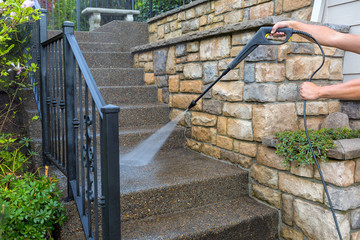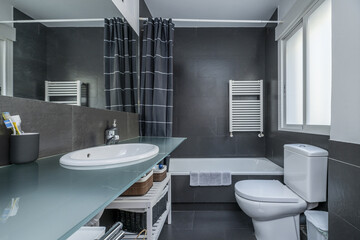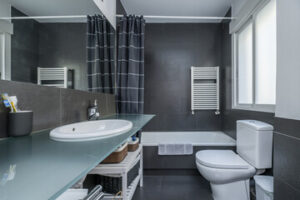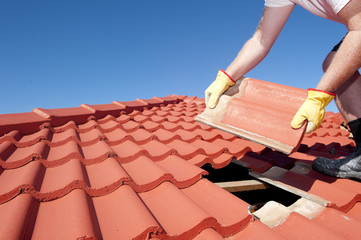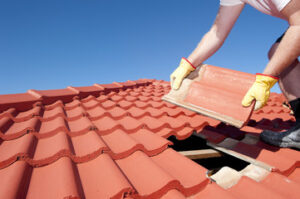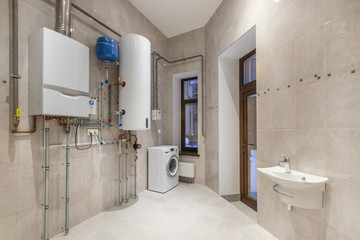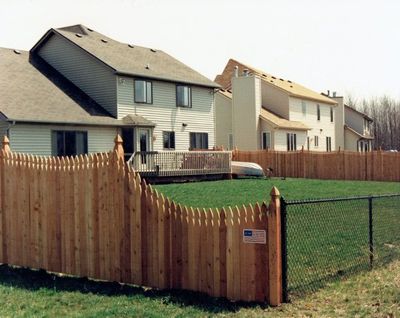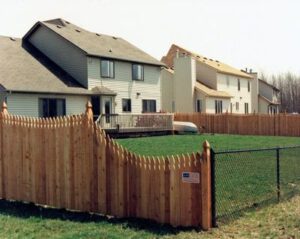Pressure washing is an effective way to remove dirt and grime from a wide range of surfaces. However, it can be dangerous if not used properly. The high-pressure water can strip paint, shatter glass, and gouge soft stone.
Using the right water temperature and the correct nozzle is essential to avoid damage. Fortunately, there are several ways to prevent this. Contact WindowWorks LLC for professional help.
Pressure washing is an effective way to remove dirt, grime, mildew, mold, and other contaminants from surfaces. It is also much faster and more efficient than traditional cleaning methods. In addition, it is safe for most materials and can be used on a wide variety of surfaces. However, you should always read the manufacturer’s instructions carefully before using a pressure washer.
Before you begin washing, make sure the area is clear of furniture, plants, and electrical outlets. Then, connect your pressure washer to a water source and adjust the PSI to suit your needs. A lower PSI is better for delicate surfaces, while a higher PSI will provide more power and speed. You can also use a nozzle to focus the spray and target specific areas. Lastly, you can add a cleaning agent to enhance the performance of your pressure washer.
A high-powered pressure washer can dislodge and remove deep-set stains, making it the perfect tool for dirty outdoor surfaces. However, the high-pressure water can damage certain materials if not used properly. It is important to balance mechanical force (PSI), water flow (GPM), and chemical action (detergents) to ensure maximum effectiveness without damaging surfaces.
For the best results, you should start by applying a detergent to break down stubborn dirt and stains. Many pressure washers come with a venturi tube that can draw in liquid detergent and add it to the water stream. It’s also a good idea to use a low-pressure setting first, then apply the detergent and rinse it off with a normal high-pressure spray.
After rinsing, it’s a good idea to dry and inspect the area for any missed spots or damage. You can also use a broom or stiff brush to sweep up any remaining debris and dispose of it. For a cleaner, brighter surface, you can post-treat surfaces with a biocide such as Sodium Hypochlorite. This will kill any remaining spores and leave surfaces looking like new. You should also consider sealing surfaces to prevent future staining.
It saves time
Pressure washing saves time because homeowners don’t have to scrub surfaces by hand. Professional cleaners use specialized equipment that adjusts the water flow and psi to clean different surfaces safely. They can blast away mud, mildew, dirt, mold, and more without damaging the surface underneath. It’s also much faster than cleaning by hand because they don’t have to work around or move heavy objects.
Pressure Washing is an important part of home maintenance, not just because it makes surfaces look clean and new but because it prevents damage and saves money. Dirty surfaces are more likely to crack, crumble or break. Regular pressure washing can prolong the lifespan of materials like asphalt and concrete. It can even extend the life of wood surfaces by removing contaminants that cause rot and deterioration.
If a homeowner wants to repaint or stain exterior surfaces, it’s a good idea to start with a fresh, clean surface. Pressure washing removes dirt, dust, grime, and moss so the paint or stain can adhere properly and last longer.
Moreover, dirty exterior surfaces can be a safety hazard. For example, sidewalks covered in mildew or algae can be slippery and dangerous for pedestrians. Pressure washing these areas can eliminate the slipping hazards and make them safer for everyone.
In addition to being safe, pressure washing can improve health by reducing allergens and other harmful substances in the air. Mold, mildew, and pollen can build up on exterior surfaces, exacerbating allergy symptoms. A thorough pressure wash can eliminate these unseen enemies and create a healthier living environment for the whole family.
While it may be tempting to try DIY pressure washing, it’s a job best left to professionals like Valley Pressure. Unsafe and improper use of the equipment can damage surfaces, causing costly repairs. It’s also important to know that too much pressure can ruin siding, shingles, and other delicate surfaces. A professional can determine the proper psi, water rotation, and cleaning products to use for each surface. They can also ensure that the area surrounding a house is protected to avoid damage to trees, shrubs, and other vegetation.
It prevents damage
Pressure washing is not only effective for cleaning dirt, mold, mildew, and debris from exterior surfaces but it also helps prevent damage. Professionals can use various nozzles to adjust the amount of water pressure and the angle at which it is directed to prevent damage to sensitive materials such as wood, vinyl, and concrete. They can even remove rust from metal surfaces without damaging them.
When using a pressure washer, it is important to choose the right nozzle for each surface and to follow proper safety procedures. For example, it is recommended to soak surfaces in detergent before applying pressure washing. This helps lift stubborn stains and makes them easier to remove. Additionally, it is essential to stand away from the surface being cleaned so as not to be harmed by the high-pressure water. Typically, most machines will have three to four different nozzles, each with a color that indicates the force of the spray: red is the highest, followed by yellow and then green, and finally white, which has the lowest power.
If the nozzle is used incorrectly, it can be dangerous and cause severe damage to delicate materials. It is also important to understand the risks of pressure washing before trying it on your own. For example, the high-pressure water can strip paint, etch or gouge stone, and damage glass. It is also possible to get electric shock from touching exposed wires or if the pressure washer is used on a live electrical outlet. Other risks include back and neck strain from the weight of the equipment and accidental penetration of eyes due to water jets.
In addition to regularly cleaning outdoor surfaces, you can also protect them by applying a protective sealant or coating. This will help prevent water absorption, fading, staining, and other damage caused by harsh weather conditions. It is also important to inspect and repair minor damages before and after pressure washing to prevent them from escalating. This step is especially critical for wood and concrete surfaces, which can deteriorate over time if not treated properly.
It increases curb appeal
Over time, dirt, grime, mildew, mold, and algae can build up on exterior surfaces like driveways, sidewalks, roofs, and siding. These unsightly build-ups make a property look neglected and unkempt, which can negatively impact curb appeal. Pressure washing removes these contaminants and restores the original appearance of exterior surfaces, making your home or commercial space more attractive.
Professional pressure washing services use a combination of high-pressure water and specialized cleaning solutions to clean a variety of materials including wood, vinyl, concrete, brick, and more. They understand the appropriate levels of pressure to use for each material and the best techniques to ensure your surfaces are cleaned thoroughly without damaging them.
Curb appeal is a critical factor when it comes to selling a home or commercial property. Potential buyers want to buy a property that looks well-maintained and shows pride of ownership. A well-kept exterior can make your property stand out in a competitive real estate market and increase its value. Pressure washing is an affordable and easy way to improve your property’s curb appeal.
Regularly scheduled pressure washing can also protect your investment by extending the life of exterior surfaces. Dirt and grime can damage surface materials over time if left unattended, but regularly cleaning these surfaces prevents this from happening. This can save you money in repairs and maintenance costs over the years.
In addition, curb appeal is important for businesses that rely on first impressions to attract customers. A clean, inviting building is a reflection of the quality of service that a business provides and can help attract new clients. In addition to regularly scheduled pressure washing, consider adding small upgrades to your property’s curb appeal like a fresh coat of paint or updated landscaping.
Whether you are looking to sell your home or commercial property, maintain the value of your investments, or simply enjoy a clean and inviting space, incorporating pressure washing into your routine can improve your curb appeal and enhance your lifestyle. Contact us today to learn more about our pressure washing services or to schedule an appointment for your home or commercial space.
